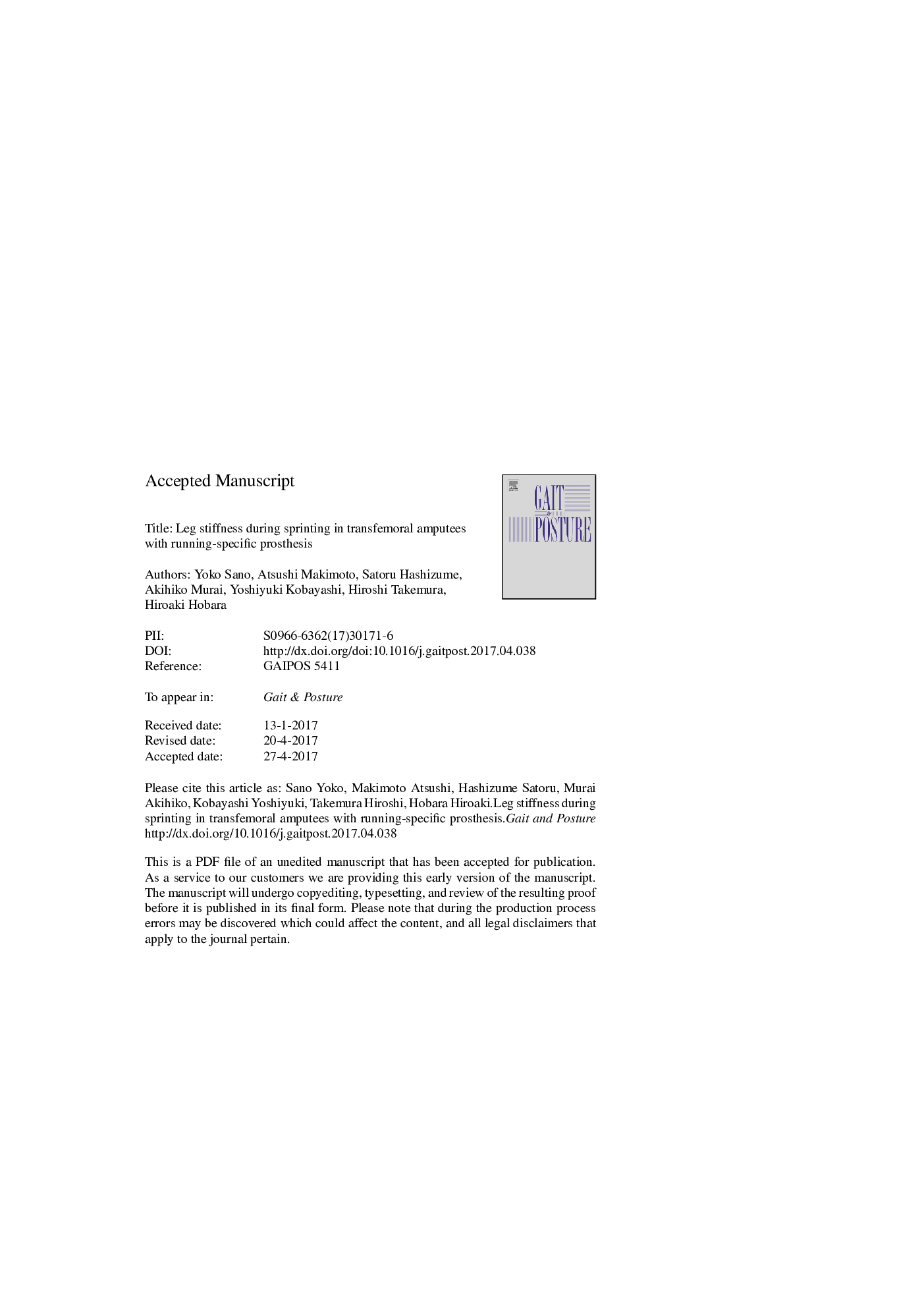| Article ID | Journal | Published Year | Pages | File Type |
|---|---|---|---|---|
| 5707509 | Gait & Posture | 2017 | 14 Pages |
Abstract
Carbon fiber running-specific prostheses are designed to reproduce the spring-like stepping behavior of individuals similar to springs loaded by the entire body mass (i.e. spring-mass model). The aim of this study was to test whether leg stiffness would be modulated differently between intact and prosthetic legs in transfemoral amputees wearing RSP during sprinting. Eight unilateral transfemoral amputees performed maximum sprinting along an indoor overground runway. Leg stiffness was calculated from kinetic and kinematic data in intact and prosthetic legs. The results showed that leg stiffness was for the prosthetic limb approximately 12% decreased compared to the intact limb. Although there was no difference in leg compression between the legs, maximal vertical ground reaction force was significantly greater in the intact leg than in the prosthetic one. These results indicate that asymmetric modulation of leg stiffness in transfemoral amputees with running-specific prostheses is mainly associated with asymmetric ground reaction force.
Keywords
Related Topics
Health Sciences
Medicine and Dentistry
Orthopedics, Sports Medicine and Rehabilitation
Authors
Yoko Sano, Atsushi Makimoto, Satoru Hashizume, Akihiko Murai, Yoshiyuki Kobayashi, Hiroshi Takemura, Hiroaki Hobara,
